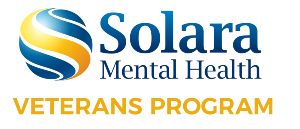
Image courtesy of Pixabay.com
How do you know if you have ADHD (Attention-Deficit Hyperactivity Disorder)? What makes this condition recognizable for an adult?
This is the second in a series of articles on recognizing ADHD in yourself as an adult, its main causes, proper diagnosis, and suggestions regarding how to address it.
As mentioned in our previous article, individuals with the disorder show a consistent pattern of three different categories of symptoms:
- Inattention (difficulty paying attention)
- Hyperactivity (being overactive)
- Impulsiveness (acting without weighing consequences)
In addition to the categories of symptoms, there are also three types of Attention-Deficit Hyperactivity Disorder that some combination of the above symptom categories would designate an individual as: ADHD/Inattentive Type, ADHD/Hyperactive-Impulsive Type, and Combined ADHD Type. This article will discuss some causes of the disorder, diagnoses, and treatment. For more information regarding the three types of ADHD, and the primary symptoms of each one, please refer to the previous article in this series.
Causes of ADHD
The exact cause of Attention-Deficit Hyperactivity Disorder is not yet known. Many issues in childhood can lead to difficulty sustaining attention, though that wouldn’t necessarily be considered to be the same as ADHD. For one, sugar consumption has long been suspected of being a cause of inattention and/or hyperactivity, though there’s no research-based evidence that would support this possibility.
Factors that may affect the development of ADHD can be:
- The mix of genetics that makes the development of ADHD likely can certainly run in a family.
- Problems in the central nervous system at certain significant moments during development are considered to be likely as a contributive factor.
- Some environmental factors (e.g., exposure to lead often found in paint and pipes in older buildings) can likely increase the risks.
This list of possible causes of ADHD is not exhaustive, and the study of the condition continues. Maternal drug use, alcohol use, and/or smoking during pregnancy as well as premature birth are considered to be additional possible risk factors.
Additional concerns
Attention-deficit/hyperactivity disorder can make life fraught with problems for children, then later as adolescents, and even later as adults. Individuals with ADHD often:
- Are frequently known to be more accident- and injury-prone than others who do not have ADHD
- Struggle with poor self-esteem and lack of feeling socially accepted
- Struggle to pay attention, which may lead to a subpar performance in work and other life endeavors, resulting in subsequent prejudice by other adults
- Have shown an increased risk for a predisposition to abuse alcohol and/or drugs as well as other antisocial behavior
Other conditions
ADHD doesn’t spark other problems psychological, developmental, or otherwise. But individuals with ADHD are more likely than others to also grapple with conditions such as:
- Anxiety disorders –which can cause overwhelming worry, insecurity, and/or nervousness
- Depression – very common for individuals with ADHD
- Learning disabilities –that include problems with comprehension and communicating confidently
- Disruptive mood dysregulation disorder –indicated by heightened irritability and problems coping with frustration
- Oppositional defiant disorder (ODD) – which is typically recognized as a pattern of negative, defiant, and hostile behavioral patterns toward authority figures
- Conduct disorder – characterized by antisocial behavior
- Bipolar disorder – a combination of depression coupled with manic behavior
- Tourette’s syndrome –known as a neurological disorder reflected by repetitive muscle or vocal tics.
ADHD Diagnosis
No single test exists that can be reliably used to diagnose attention-deficit hyperactive disorder. As mentioned in our previous article, ADHD is typically diagnosed initially when a child consistently exhibits a majority or all of the recognized symptoms consistently for more than six months.
For a reliable diagnosis, you should receive a full physical, including screenings for vision and hearing. The U.S. Food and Drug Administration (FDA) has approved the use of the Neuropsychiatric EEG-Based Assessment Aid (NEBA) System, a non-invasive cerebral scan meant to monitor theta and beta brain waves. The theta/beta ratio will typically be higher for individuals with attention-deficit hyperactive disorder than for those without.
A comprehensive medical history should also be taken into account to screen for additional conditions that could be affecting you. ADHD-like symptoms and behaviors that can help determine whether you have ADHD or something else includes:
- Thyroid problems
- Problems sleeping
- Unrecognized seizures
- Recent significant life changes (such as the death of someone close to you, death of a long-time pet, divorce, moving)
- Anxiety
- Depression
As previously mentioned in our last article, even though ADHD symptoms more often than not begin during childhood, hyperactivity will often diminish as a child grows into adolescence. Common symptoms (problems with paying attention, poor impulse control, and disorganization) may persist through an individual’s teens, on through college, and into adulthood. In the next article in the Attention-Deficit Hyperactivity Disorder series, we will discuss Adult ADHD in more depth.
Do you feel you might have ADHD as an adult? It is treatable and manageable. If you or someone close to you need to talk to someone about mental health issues that seem overwhelming, we can help. Consider reaching out to our expert team at Solara Mental Health at 844-600-9747.


